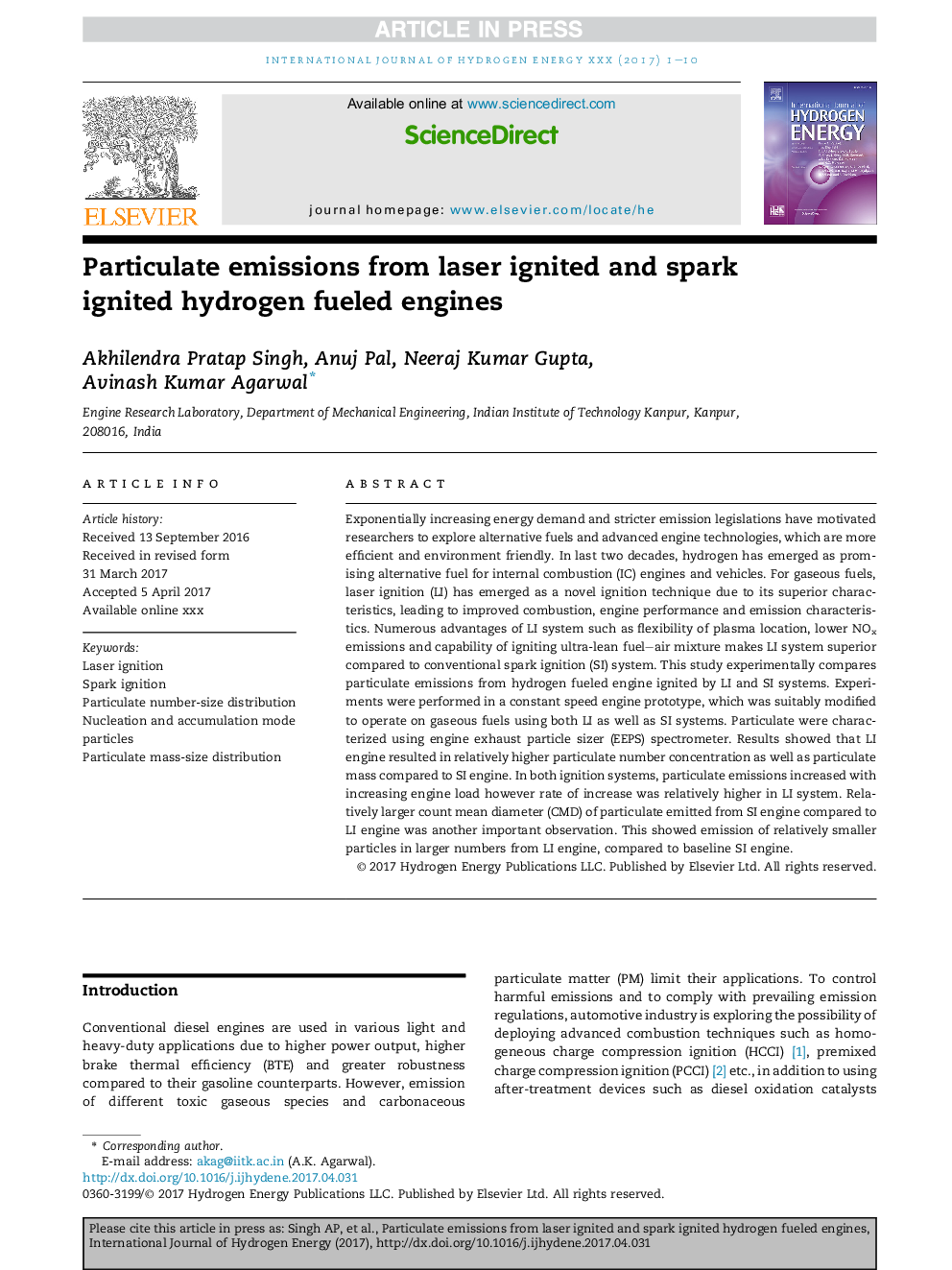| Article ID | Journal | Published Year | Pages | File Type |
|---|---|---|---|---|
| 5146480 | International Journal of Hydrogen Energy | 2017 | 10 Pages |
Abstract
Exponentially increasing energy demand and stricter emission legislations have motivated researchers to explore alternative fuels and advanced engine technologies, which are more efficient and environment friendly. In last two decades, hydrogen has emerged as promising alternative fuel for internal combustion (IC) engines and vehicles. For gaseous fuels, laser ignition (LI) has emerged as a novel ignition technique due to its superior characteristics, leading to improved combustion, engine performance and emission characteristics. Numerous advantages of LI system such as flexibility of plasma location, lower NOx emissions and capability of igniting ultra-lean fuel-air mixture makes LI system superior compared to conventional spark ignition (SI) system. This study experimentally compares particulate emissions from hydrogen fueled engine ignited by LI and SI systems. Experiments were performed in a constant speed engine prototype, which was suitably modified to operate on gaseous fuels using both LI as well as SI systems. Particulate were characterized using engine exhaust particle sizer (EEPS) spectrometer. Results showed that LI engine resulted in relatively higher particulate number concentration as well as particulate mass compared to SI engine. In both ignition systems, particulate emissions increased with increasing engine load however rate of increase was relatively higher in LI system. Relatively larger count mean diameter (CMD) of particulate emitted from SI engine compared to LI engine was another important observation. This showed emission of relatively smaller particles in larger numbers from LI engine, compared to baseline SI engine.
Keywords
Related Topics
Physical Sciences and Engineering
Chemistry
Electrochemistry
Authors
Akhilendra Pratap Singh, Anuj Pal, Neeraj Kumar Gupta, Avinash Kumar Agarwal,
